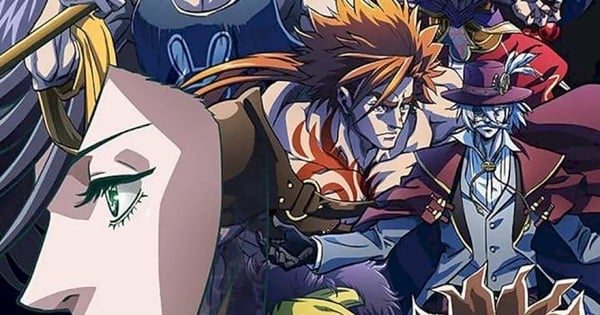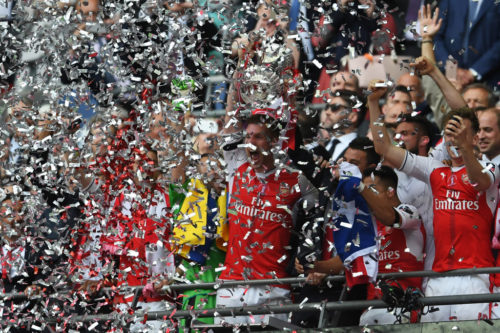Record of Ragnarok is back, and it has returned with a second season that surpasses the first in terms of execution. The real question is whether this success is enough to keep viewers engaged and coming back for more.
When the first season of Record of Ragnarok premiered in the summer of 2021, it faced heavy criticism for its subpar animation quality. Many viewers felt that it was nothing more than a slideshow at times, and certain scenes garnered particular attention for being exceptionally bad and becoming viral memes. While I, like many others, had similar criticisms of the first season, I didn’t find it as terrible as some. Having watched anime for decades, I had seen far worse. However, admitting that “I wasn’t as harsh as others about the first season” isn’t exactly a glowing endorsement either.
One of the main complaints from fans of the original manga was that the story deserved better. The manga is filled with grandeur and exciting concepts, and seeing them depicted with lackluster animation was a major disappointment. Although I haven’t read the manga myself, I can understand this sentiment.
Fortunately, season 2 of Record of Ragnarok showcases significant improvements across the board, most notably in animation quality. When you start from the bottom, the only way to go is up, and this season manages to elevate the animation quality. While the first season had long stretches of mediocre animation punctuated by significant drops in quality, the second season offers long stretches of consistently good animation with a few standout sequences. Although the difference may not be night and day, it’s noticeable and appreciated. The visuals come to life, which is a welcome change.
The show’s conceptual creativity remains consistently excellent. The basic premise may not be groundbreaking – a tournament-style anime where two fighters face off – but Record of Ragnarok manages to create tension and a sense of real stakes, even with new fighters introduced in each match. Notably, Jack the Ripper’s Volundr offers unexpected surprises, making the fights more than just physical brawls.
Furthermore, the color commentary from various personalities in the stands adds an interesting element. Tournament arcs often thrive on ringside commentary, and season 2 delivers some great ones. While there are expected character traits, such as Zeus being a scheming old man and Aphrodite embodying a voluptuous stereotype, the real delight comes from the random appearances of historical figures relevant to each fight. For example, Sir Arthur Conan Doyle expresses that even his renowned detective Sherlock Holmes couldn’t solve the case of Jack the Ripper – a shocking revelation!
The standout feature of this season is the emotional depth displayed in the Hercules versus Jack the Ripper fight. Personally, I find myself rooting for humanity by default, as I consider capricious deities unworthy of veneration, and I’m not particularly fond of human extinction. Therefore, naturally, I’m inclined to cheer for the human contender. This fight cleverly twists expectations, portraying Hercules as a sympathetic character and Jack the Ripper as the clear antagonist representing humanity. The crowd also struggles with conflicting emotions, oscillating between not wanting to die and having immense admiration for Hercules while holding disdain for Jack the Ripper. The writing is smart, and the flashbacks intensify these feelings.
The Shiva versus Raiden fight may lack the same moral complexity, but it remains engaging. Raiden’s love for strong women, specifically his infatuation with Thrud, is relatable, and the fight introduces several intriguing ideas. Raiden’s inability to control his strength as a child, resulting in his muscles shattering his bones, is the kind of over-the-top absurdity that adds excitement. Additionally, the idea that Raiden can embody sumo wrestling to the point of standing toe-to-toe with Shiva is simply amazing. However, it is Shiva who receives more character development, unexpectedly making him more human and sympathetic. These fights, coupled with improved animation, are undoubtedly a win.
However, the problem with Record of Ragnarok Season 2 lies in whether the story offers enough to keep viewers entertained. With only ten episodes, two fights are stretched across the entire season. While longer arcs exist in other shows, the formulaic approach employed here cannot be ignored. Each match spans precisely five episodes and follows a similar tempo: the two fighters enter the ring, battle begins, flashbacks for each fighter, ultimate moves from both, and then on to the next fight.
Furthermore, the sheer power level of the fighters starts to become tiresome. When every fighter possesses peak abilities and constantly pushes themselves to unleash another ultimate attack, it all starts to blend together. The Jack the Ripper fight stands out because he cunningly employs creative strategies to challenge Hercules, rather than relying on transformations or super moves. These variations prevent the fights from becoming monotonous slugfests that last for hours.
While engaging animation and unique fight choreography often alleviate monotony, they fall short in this season. Once again, the Jack the Ripper fight offers more conceptually, but the Shiva versus Raiden fight becomes a series of massive blows exchanged back and forth. The animation fails to elevate the fights beyond mediocrity.
The repetitiveness of the structure also becomes wearisome. The initial excitement of the matches can only captivate for so long before the realization sets in that you are in for a five-episode slog with limited visual excitement and few surprises, aside from sudden power-ups or new techniques. It’s unfortunate that the series feels like it’s already falling into a rut with repetitive setups and payoffs, considering its relatively early stage.
On the bright side, the side stories introduce more variety, offering a welcome change of pace. The drama among the Valkyries, the shenanigans involving the Gods of Fortune, and the conflicts between Buddha and other deities are all intriguing. However, these moments often feel fleeting, with the story quickly returning to the arena for more fights. Hopefully, future seasons will incorporate more of these side stories to inject new stakes and drama into the otherwise repetitive fights.
In conclusion, Record of Ragnarok Season 2 surpasses its predecessor, but the improvement is minor at best. The novelty of its tricks is already beginning to wear thin. With countless anime options vying for viewers’ attention, merely doing slightly better than before is not enough. Season 3 needs to amplify the quality and diversity to captivate viewers beyond a mere temporary amusement.






